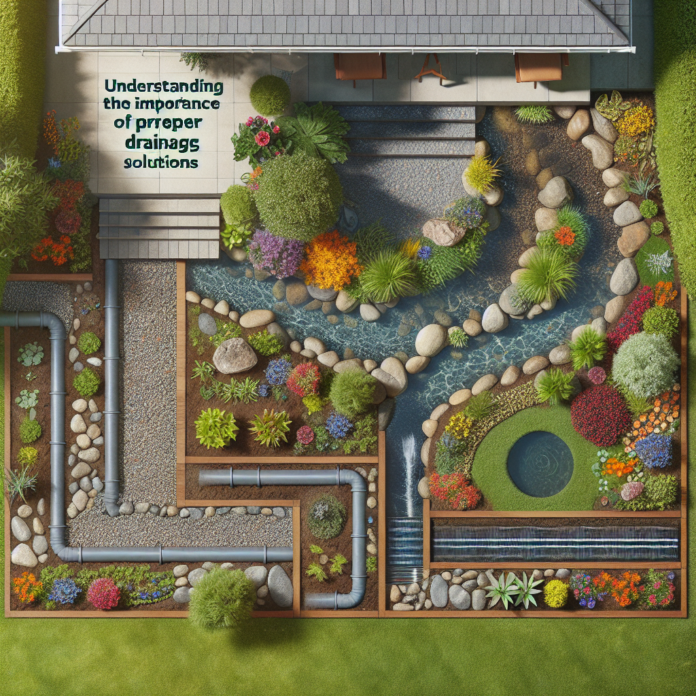Good drainage is not just an element of interior or exterior design; it’s an absolute necessity in maintaining the wellbeing of your home or commercial building. Neglecting proper drainage solutions can lead to several consequences, including waterlogged areas, structural damage to property, and health risks that are associated with stagnant water, fungi, and mold.
What is a Drainage System?
A drainage system is an arrangement for the collection, conveyance, elimination or treatment of water. Residential drainage systems include gutters, downspouts, landscaping solutions, and adjustments to terrain to direct water away from the property. Commercial drainage solutions may include wastewater and stormwater drainage installations. Superior drainage systems are designed to transport water from where it’s unrequired to areas where it can be disposed of or reused effectively.
Preventing Water Accumulation
Proper drainage is of utmost importance in preventing water accumulation which can pose a significant threat to the structural integrity of your building. If ignored, accumulated or standing water can seep into foundations, causing cracks and destabilization. Apart from the costly repairs, it can cause the growth of mold and mildew, both harmful to human health.
Healthy Soil and Plants
Landscaping is considerably reliant on good drainage. Without a reliable way to divert excess water, your garden could quickly turn into a swamp with waterlogged soil, hampering plants’ growth and survival. With an appropriate drainage solution, water is diverted from the surface, preventing soil erosion and maintaining the health of your flora.
Importance for Public Infrastructure
Drainage systems are integral to the smooth functioning of towns and cities, managing rainwater effectively to prevent urban flooding. Sewage systems help manage wastewater, reducing the risk of disease spread through contaminated water and unnecessary water waste.
Path to Sustainability
With the increasing emphasis on sustainability and water conservation, effective drainage solutions also contribute to these goals. Rainwater runoff can be harnessed for different purposes like irrigation or flushing toilets after treatment through an adequately integrated drainage system. A good drainage system helps to prevent water wastage and promote water reuse, aligning with social efforts toward conservation and environmental responsibility.
Conclusion
Understanding the importance of drainage solutions and investing in adequate systems will save you from long-term health hazards, costly damage repairs, and will contribute significantly to creating healthier communities and more sustainable ways of living. Keeping up with regular maintenance of these systems ensures their longevity, contributing to a safe and functioning property or infrastructure.
FAQs
Q: What can happen if my property doesn’t have proper drainage?
A: Without proper drainage solutions, water can accumulate and cause severe problems such as soil erosion, structural damage to the property, and health risks like mold and mildew.
Q: Can good drainage systems contribute to sustainability?
A: Yes. An exemplary drainage system not only reroutes excess water away but can also be designed to conserve and reuse water, thereby contributing to sustainability.
Q: How do drainage systems support public infrastructure?
A: Drainage systems are integral in managing water in towns and cities. They help manage rainwater, prevent flooding, and reduce health risks associated with standing water.
Q: How often should drainage systems undergo maintenance?
A:
The frequency of maintenance for drainage systems varies depending on the type and usage. However, regular maintenance should be conducted to ensure the system’s efficiency and longevity.
Q: Can poor drainage affect my garden?
A: Yes. Poor drainage can waterlog soil and damage plant roots, affecting the health and growth of your plants. Proper drainage systems help maintain healthy soils and plant life.

